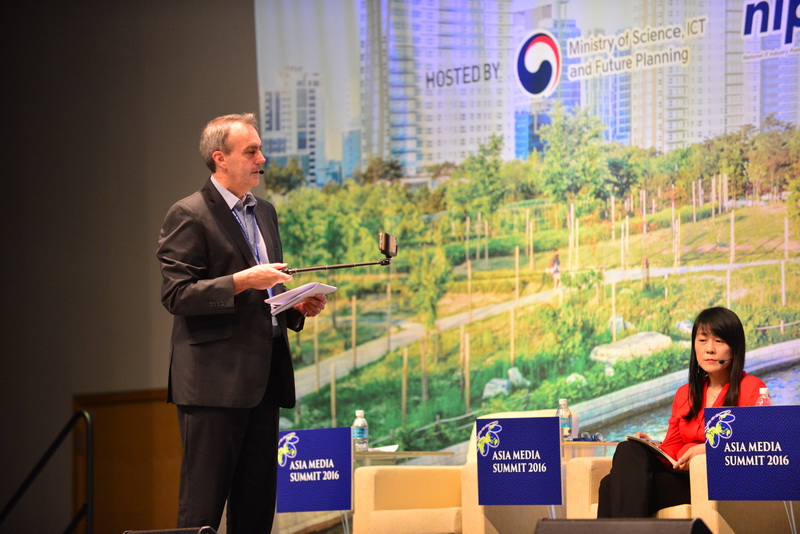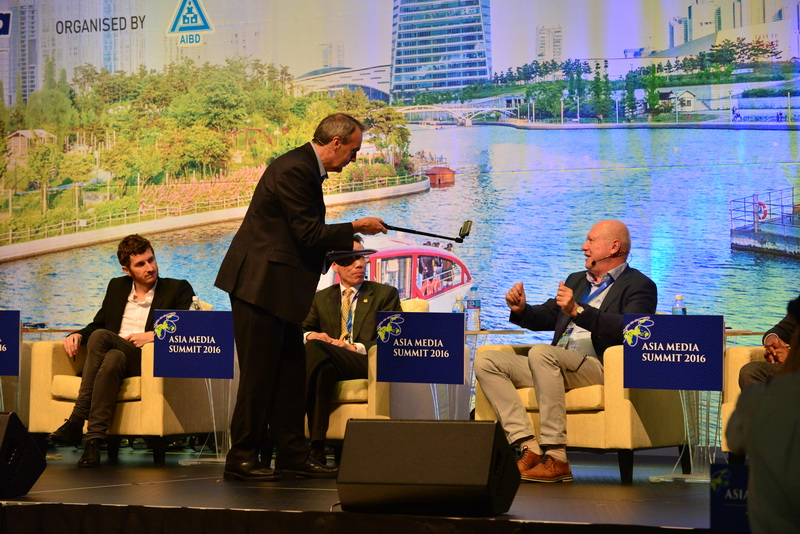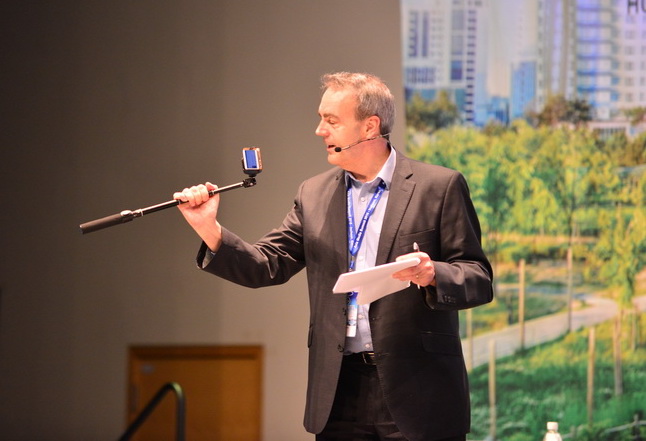“Everyone tells stories. The difference between us as media professionals and everyone else, is that we tell stories for a living,” said radioinfo’s Steve Ahern, chairing the Storytelling panel session at the 2016 Asia Media Summit in Korea.
“Our stories have to matter,” according to Ahern, who says they must get an audience, must have a structure and a purpose, and they must be well told.
The panel explored the question of whether there are new ways to tell stories in the modern media environment. While following the rules of good storytelling, is the new media landscape presenting us with new ways to tell our stories.
The answer is yes… and no.
Yes, there are new ways to tell stories, but don’t forget the basics, was the message from Kim Sunah, a producer from Korea. She identified six important ways to tell stories in the documentary format:
- Poetic, where there is no narrative or voiceover
- Expository, which seeks to make an argument and persuade the audience
- Observational, with minimal intervention, fly on the wall style
- Participatory, where the documentary maker is featured and interacts with their subjects
- Reflective, where there is a relationship between the documentary maker and audience
- Performative, where the documentary maker is the main subject.
Antonie Nazaret, Head of Content at DailyMotion Singapore said documentaries have moved from ‘me’ focused stories to ‘we’ focused stories. “From we to you is the approach now, where there is a blurring of lines between collective media and personal media,” he said.
About 60% of the millennial generation consider mobile as their only device, according to Nazaret, who says that stories need to be told for mobile devices. Examples from television included the production techniques of House of Cards and the trend for binge watching, where there is no need for catch up opening sequences or end credits, because the audience may playlist one episode after another. 56% of people watched the whole series of House of Cards in six days, reinforcing his point about binge watching.
Zhang Jianxin, Principal editor for CCTV China’s documentary channel outlined the commitment of CCTV to documentaries but said the focus has changed. “We used to choose subjects depending on what stories were available, but now we consider the audience interests first, otherwise they will not watch because the audience has more power to choose now that there are so many ways to watch,” he said. Two successful programs used in Jianxin’s examples were ‘A Bite of China’ and ‘Biz Date.’
Moving to audio storytelling, Swedish Radio’s Anders Held gave examples of podcasts, which have become popular with audiences in Sweden.
“Our P3 youth channel makes long podcasts, up to 90 minutes and they are popular with youth, proving that if you tell good quality stories the audience will use them. The network uses social media to get closer to its audience and convince them to listen to its content. “In this digital world we have to be chosen, we have to convince potential audiences why they should listen to us,” he said.
Hussein Kurji from Kenya production company Xeinium talked about his mocumentary about aid workers. Kurji’s fictional aid NGO is the vehicle for humourous exploration of aid wastage in a comedic style. The two innovative things about this mocumentary are the way production funds were raised and storylines were found.
“We used crowd funding to get the money to pilot the series, it seems like a lot of people liked the idea because we raised the money we needed in a couple of weeks,” he said.
Kurji’s mocumentary series, called ‘The Samaratins,’ also gets its storylines from real situations. “We put a call on our website for aid workers to tell us about the ridiculous situations they had encountered and the storylines kept tumbling in, so many people had stories of waste and misused funding that we could incorporate,” he said.
The interactive panel discussion was broadcast live on Periscope to illustrate the new tools of storytelling, with moderator Steve Ahern ensuring all the panellists got their share of smartphone coverage.



Watch Steve’s opening comments below, which were broadcast on Periscope as an example of using new technology.

